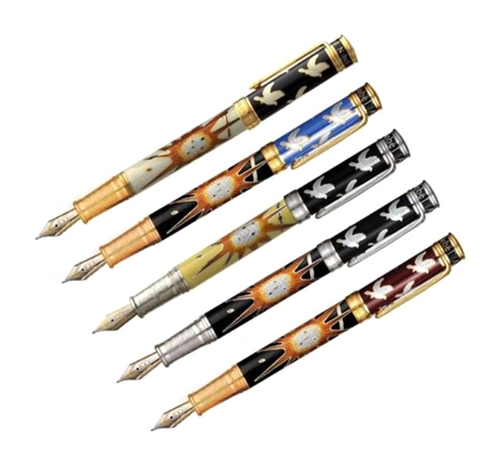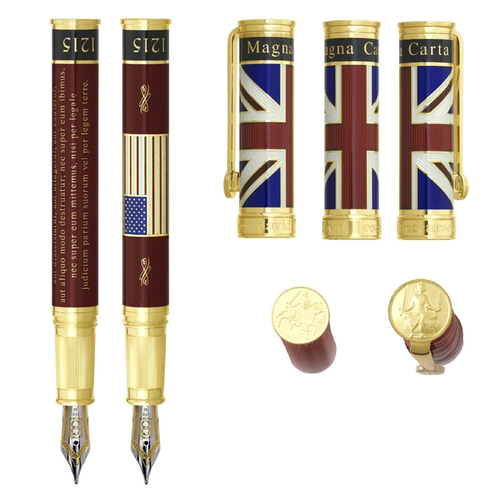Raoul Wallenberg - Righteous among Nations:
- Raoul Gustav Wallenberg was a citizen of the world. Born into a prominent Swedish family August 4, 1912, Wallenberg was raised primarily by his paternal grandfather who aided Raul in his education, introducing him to foreign lands, languages and cultures. During his travels, Raoul was deeply affected by stories he heard from people who had escaped Nazi Germany. In July, 1944, Wallenberg opened an embassy office in Budapest where he hired 400 people, many of them Jews who were granted diplomatic immunity for working in the embassy. Wallenberg’s office subsequently provided protective passports to 20,000 Jews. These passports, called Schutz Passes protected their bearers from deportation under the Swedish crown. Wallenberg also established safe houses which flew the Swedish flag, identifying them as annexes to the Swedish Embassy and shielding their inhabitants from the Nazis. Wallenberg was fearless. He was a skilled negotiator and organizer, a good actor who could show different personalities as circumstances required. He could be calm, humorous and intellectual, warm and flattering, however, if necessary, he could be confrontational and aggressive, shouting and threatening. While befriending, bribing and buying off German officials, he reminded them that “at the war’s end, they would be seen as criminals on the losing end of the battle”. Wallenberg’s spies provided him with details about police operations and political activity, and the Nazis didn’t dare violate his Swedish diplomatic status. Wallenberg also personally rescued Jews from deportation trains by appearing at the train yard and handing out Swedish papers to as many as he could reach onboard, arguing that all those holding papers should be let off. Despite attempts on Wallenberg’s life, he remained resolute to his cause. In December 1944, on a trip to Debrecen, located 120 miles east of Budapest, Wallenberg and his driver were taken into custody by Soviet forces. The two men were never seen or heard from again by the outside world. Reports of Wallenberg’s imprisonment by the Soviets were at first denied, but in 1957, Andrei Gromyko, the Soviet deputy foreign minister admitted that Wallenberg had indeed been imprisoned by the Soviets and had died of heart disease in Moscow’s Lubyanka prison. His body was reportedly cremated, but no paperwork was given to Swedish authorities and no explanation as to his imprisonment was ever provided. Some theorize that Wallenberg may have been classified by the Soviets as a Western spy. In December 2000, Russia officially admitted Soviet forces had wrongfully held Wallenberg at a Soviet prison, however, the announcement did not provide any details about the cause of the diplomat’s death. It is generally accepted that Wallenberg was executed in 1947 in a Soviet prison. In 1981, Wallenberg was named an honorary American citizen by U.S. President Ronald Reagan. Until that time, that honor had been held only by Winston Churchill. In 1995, a bust of Wallenberg was displayed in the rotunda of the U.S. Capitol, and in 1997 a stamp honoring Wallenberg was issued by the U.S. Postal Service. Raoul Wallenberg is memorialized around the world, including a memorial at Yad Vashem in Jerusalem. This memorial honors non-Jewish individuals who risked their lives to save the Jews from Nazi executioners. One of the 600 trees along the Avenue of the Righteous bears the name of Raoul Wallenberg, a Swede. Raoul is responsible for saving an estimated 100,000 Jews during WW2. He is honored in the Guinness Book of World Records as having saved the greatest number of people from extinction. If you have any questions, please give us a call at 800-355-2956.
Raoul Wallenberg Collection:
- The Raoul Wallenberg is the 29th in the David Oscarson™ series of Limited Edition writing instruments. Produced in two color variations, each limited to an aggregate production of 100 pieces (including fountain pens and roller balls), the Wallenberg Collection stands as a lasting tribute to his life, his ultimate sacrifice and the estimated 100,000 Jewish lives he heroically saved during WWII. A Schutz Pass featuring the likeness and signature of Raoul Wallenberg is featured in low relief on the cap of each Collection piece. On the back of the crown in high relief is the star of David. The unique clip design represents the road that was “winding, dangerous and full of obstacles” as the Jews were trying to escape the Nazis; engraved at its base are three doves in flight. At the base of each barrel is the Swedish Triple Crown. One of the barrel variations features a repeating star of David motif inspired by the stained glass windows in the Dohany Synagogue in Budapest; the other features Raoul Wallenberg’s signature in high relief as well as the famous quote (in Swedish) by Raoul Wallenberg:”För mig finns inget annat val. Jag har åtagit mig denna uppgift och jag skulle aldrig kunna återvända till Stockholm utan att veta med mig att jag gjort allt som står i mänsklig makt för att rädda så många judar som möjligt.” which, translated reads: “For me there is no other choice. I have undertaken this duty, and I would never be able to return to Stockholm without knowing within myself that I had done everything within human power to save as many Jews as possible.”
Hard Enamel:
- The Wallenberg Collection continues in the spirit of artistic mastery and the tradition of Old World craftsmanship by combining the centuries-old technique of Guilloché with the art and expertise of Hard Enamel. Using a mortar and pestle, a composition of glass, water and metal oxides is ground for hours by hand. When settled, the water is removed, leaving the fine paste that is the basis for hard enamel. A quill is then used to apply each coat of the mixture to the surface of the metal, ensuring that the entire guilloché area is completely covered in enamel. The components are then fired in a furnace at temperatures exceeding 1,000° F, fusing the enamel to the metal and forming a layer of glass. After cooling, the pieces are manually ground with a diamond file, restoring their proper shape and surface. This tedious process is repeated at length until the level of enamel reaches the depth required to cover the peaks and fill the valleys of each intricate guilloché pattern. When the final stages of firing are completed, the pieces are polished and buffed, revealing the velvet finish of translucent hard enamel. Production of translucent hard enamel demands the highest levels of patience, experience and skill. A five-year apprenticeship is required to ensure that the highest levels of quality will be met in each individual Collection piece.
- Raoul Gustav Wallenberg was a citizen of the world. Born into a prominent Swedish family August 4, 1912, Wallenberg was raised primarily by his paternal grandfather who aided Raul in his education, introducing him to foreign lands, languages and cultures. During his travels, Raoul was deeply affected by stories he heard from people who had escaped Nazi Germany. In July, 1944, Wallenberg opened an embassy office in Budapest where he hired 400 people, many of them Jews who were granted diplomatic immunity for working in the embassy. Wallenberg’s office subsequently provided protective passports to 20,000 Jews. These passports, called Schutz Passes protected their bearers from deportation under the Swedish crown. Wallenberg also established safe houses which flew the Swedish flag, identifying them as annexes to the Swedish Embassy and shielding their inhabitants from the Nazis. Wallenberg was fearless. He was a skilled negotiator and organizer, a good actor who could show different personalities as circumstances required. He could be calm, humorous and intellectual, warm and flattering, however, if necessary, he could be confrontational and aggressive, shouting and threatening. While befriending, bribing and buying off German officials, he reminded them that “at the war’s end, they would be seen as criminals on the losing end of the battle”. Wallenberg’s spies provided him with details about police operations and political activity, and the Nazis didn’t dare violate his Swedish diplomatic status. Wallenberg also personally rescued Jews from deportation trains by appearing at the train yard and handing out Swedish papers to as many as he could reach onboard, arguing that all those holding papers should be let off. Despite attempts on Wallenberg’s life, he remained resolute to his cause. In December 1944, on a trip to Debrecen, located 120 miles east of Budapest, Wallenberg and his driver were taken into custody by Soviet forces. The two men were never seen or heard from again by the outside world. Reports of Wallenberg’s imprisonment by the Soviets were at first denied, but in 1957, Andrei Gromyko, the Soviet deputy foreign minister admitted that Wallenberg had indeed been imprisoned by the Soviets and had died of heart disease in Moscow’s Lubyanka prison. His body was reportedly cremated, but no paperwork was given to Swedish authorities and no explanation as to his imprisonment was ever provided. Some theorize that Wallenberg may have been classified by the Soviets as a Western spy. In December 2000, Russia officially admitted Soviet forces had wrongfully held Wallenberg at a Soviet prison, however, the announcement did not provide any details about the cause of the diplomat’s death. It is generally accepted that Wallenberg was executed in 1947 in a Soviet prison. In 1981, Wallenberg was named an honorary American citizen by U.S. President Ronald Reagan. Until that time, that honor had been held only by Winston Churchill. In 1995, a bust of Wallenberg was displayed in the rotunda of the U.S. Capitol, and in 1997 a stamp honoring Wallenberg was issued by the U.S. Postal Service. Raoul Wallenberg is memorialized around the world, including a memorial at Yad Vashem in Jerusalem. This memorial honors non-Jewish individuals who risked their lives to save the Jews from Nazi executioners. One of the 600 trees along the Avenue of the Righteous bears the name of Raoul Wallenberg, a Swede. Raoul is responsible for saving an estimated 100,000 Jews during WW2. He is honored in the Guinness Book of World Records as having saved the greatest number of people from extinction. If you have any questions, please give us a call at 800-355-2956.
Raoul Wallenberg Collection:
- The Raoul Wallenberg is the 29th in the David Oscarson™ series of Limited Edition writing instruments. Produced in two color variations, each limited to an aggregate production of 100 pieces (including fountain pens and roller balls), the Wallenberg Collection stands as a lasting tribute to his life, his ultimate sacrifice and the estimated 100,000 Jewish lives he heroically saved during WWII. A Schutz Pass featuring the likeness and signature of Raoul Wallenberg is featured in low relief on the cap of each Collection piece. On the back of the crown in high relief is the star of David. The unique clip design represents the road that was “winding, dangerous and full of obstacles” as the Jews were trying to escape the Nazis; engraved at its base are three doves in flight. At the base of each barrel is the Swedish Triple Crown. One of the barrel variations features a repeating star of David motif inspired by the stained glass windows in the Dohany Synagogue in Budapest; the other features Raoul Wallenberg’s signature in high relief as well as the famous quote (in Swedish) by Raoul Wallenberg:”För mig finns inget annat val. Jag har åtagit mig denna uppgift och jag skulle aldrig kunna återvända till Stockholm utan att veta med mig att jag gjort allt som står i mänsklig makt för att rädda så många judar som möjligt.” which, translated reads: “For me there is no other choice. I have undertaken this duty, and I would never be able to return to Stockholm without knowing within myself that I had done everything within human power to save as many Jews as possible.”
Hard Enamel:
- The Wallenberg Collection continues in the spirit of artistic mastery and the tradition of Old World craftsmanship by combining the centuries-old technique of Guilloché with the art and expertise of Hard Enamel. Using a mortar and pestle, a composition of glass, water and metal oxides is ground for hours by hand. When settled, the water is removed, leaving the fine paste that is the basis for hard enamel. A quill is then used to apply each coat of the mixture to the surface of the metal, ensuring that the entire guilloché area is completely covered in enamel. The components are then fired in a furnace at temperatures exceeding 1,000° F, fusing the enamel to the metal and forming a layer of glass. After cooling, the pieces are manually ground with a diamond file, restoring their proper shape and surface. This tedious process is repeated at length until the level of enamel reaches the depth required to cover the peaks and fill the valleys of each intricate guilloché pattern. When the final stages of firing are completed, the pieces are polished and buffed, revealing the velvet finish of translucent hard enamel. Production of translucent hard enamel demands the highest levels of patience, experience and skill. A five-year apprenticeship is required to ensure that the highest levels of quality will be met in each individual Collection piece.












